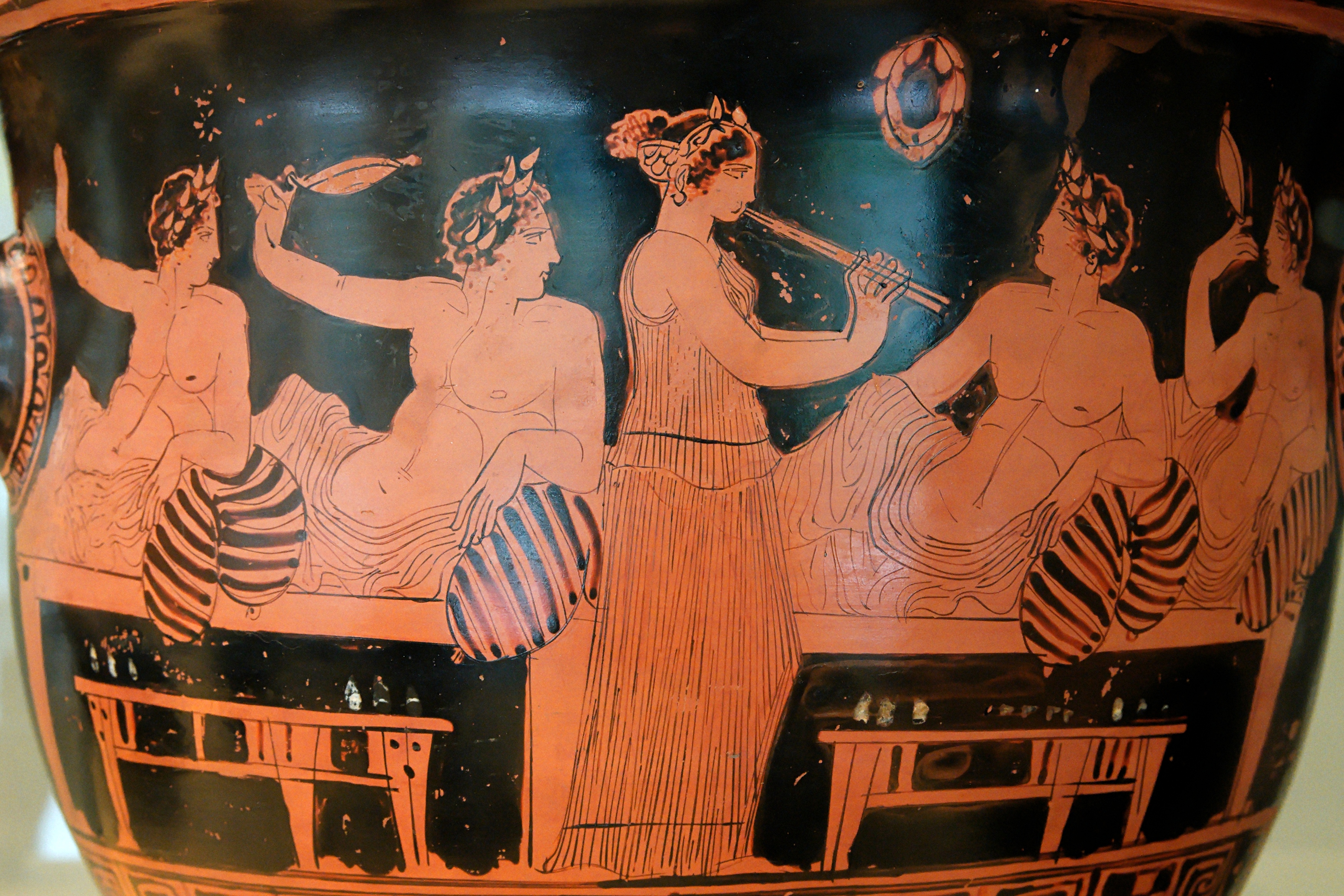|
7 Päivää
''Seiska'', also known as ''7 päivää'' ( Finnish for 7 days), is a Finnish gossip magazine published in Helsinki, Finland. History and profile ''7 päivää'' was first published in 1992. The magazine is owned by the Aller Media and is published 49 issues per year by the Aller Julkaisut Oy, a subsidiary of the Aller Media. It focuses mostly on sensationalistic interviews of celebrities and pays rewards for leads on stories. Central subjects for stories are weddings, divorces and other celebrity gossip. The magazine has also a TV supplement ''TV-Seiska''. Ilkka Janhunen is among the past editors-in-chief of ''7 päivää''. In May 2006 ''7 päivää'' caused a controversy by printing on its front cover a picture of Tomi Putaansuu, the lead singer of the band Lordi, without his face make-up on, although the band had requested – after winning the Eurovision Song Contest 2006 – that no pictures of unmasked band members be published. The picture caused a huge reaction amon ... [...More Info...] [...Related Items...] OR: [Wikipedia] [Google] [Baidu] |
Gossip Magazine
A gossip magazine, also referred to as a tabloid magazine, is a magazine that features scandalous stories about the personal lives of celebrities and other well-known individuals. In North America, this genre of magazine flourished in the 1950s and early 1960s. The title ''Confidential'', founded in 1952, boasted a monthly circulation in excess of ten million, and it had many competitors, with names such as ''Whisper'', ''Dare'', ''Suppressed'', ''The Lowdown'', ''Hush-Hush'', and ''Uncensored''. These magazines included more lurid and explicit content than did the popular newspaper gossip columns of the time, including tales of celebrity infidelity, arrests, and drug use. History The publication generally credited as America's first national weekly gossip tabloid is ''Broadway Brevities and Society Gossip'', which was launched in New York in 1916 and edited by a Canadian named Stephen G. Clow. ''Brevities'' started out covering high society and the A-list of the New Yor ... [...More Info...] [...Related Items...] OR: [Wikipedia] [Google] [Baidu] |
Boycott
A boycott is an act of nonviolent resistance, nonviolent, voluntary abstention from a product, person, organisation, or country as an expression of protest. It is usually for Morality, moral, society, social, politics, political, or Environmentalism, environmental reasons. The purpose of a boycott is to inflict some economic loss on the target, or to indicate a moral outrage, usually to try to compel the target to alter an objectionable behavior. The word is named after Captain Charles Boycott, agent of an absentee landlord in Ireland, against whom the tactic was successfully employed after a suggestion by Irish nationalist leader Charles Stewart Parnell and his Irish Land League in 1880. Sometimes, a boycott can be a form of consumer activism, sometimes called moral purchasing. When a similar practice is legislated by a national government, it is known as a Economic sanctions, sanction. Frequently, however, the threat of boycotting a business is an empty threat, with no signifi ... [...More Info...] [...Related Items...] OR: [Wikipedia] [Google] [Baidu] |
Magazines Published In Helsinki
A magazine is a periodical literature, periodical publication, print or digital, produced on a regular schedule, that contains any of a variety of subject-oriented textual and visual content (media), content forms. Magazines are generally financed by advertising, newsagent's shop, purchase price, prepaid subscription business model, subscriptions, or by a combination of the three. They are categorised by their frequency of publication (i.e., as weeklies, monthlies, quarterlies, etc.), their target audiences (e.g., women's and trade magazines), their subjects of focus (e.g., popular science and religious), and their tones or approach (e.g., works of satire or humor). Appearance on the cover of print magazines has historically been understood to convey a place of honor or distinction to an individual or event. Term origin and definition Origin The etymology of the word "magazine" suggests derivation from the Arabic language, Arabic (), the broken plural of () meaning "depot, s ... [...More Info...] [...Related Items...] OR: [Wikipedia] [Google] [Baidu] |
Finnish-language Magazines
Finnish (endonym: or ) is a Finnic language of the Uralic language family, spoken by the majority of the population in Finland and by ethnic Finns outside of Finland. Finnish is one of the two official languages of Finland, alongside Swedish. In Sweden, both Finnish and Meänkieli (which has significant mutual intelligibility with Finnish) are official minority languages. Kven, which like Meänkieli is mutually intelligible with Finnish, is spoken in the Norwegian counties of Troms and Finnmark by a minority of Finnish descent. Finnish is typologically agglutinative and uses almost exclusively suffixal affixation. Nouns, adjectives, pronouns, numerals and verbs are inflected depending on their role in the sentence. Sentences are normally formed with subject–verb–object word order, although the extensive use of inflection allows them to be ordered differently. Word order variations are often reserved for differences in information structure. Finnish orthography uses ... [...More Info...] [...Related Items...] OR: [Wikipedia] [Google] [Baidu] |
Entertainment Magazines
Entertainment is a form of activity that holds the attention and interest of an audience or gives pleasure and delight. It can be an idea or a task, but it is more likely to be one of the activities or events that have developed over thousands of years specifically for the purpose of keeping an audience's attention. Although people's attention is held by different things because individuals have different preferences, most forms of entertainment are recognisable and familiar. Storytelling, music, drama, dance, and different kinds of performance exist in all cultures, were supported in royal courts, and developed into sophisticated forms over time, becoming available to all citizens. The process has been accelerated in modern times by an entertainment industry that records and sells entertainment products. Entertainment evolves and can be adapted to suit any scale, ranging from an individual who chooses private entertainment from a now enormous array of pre-recorded products, t ... [...More Info...] [...Related Items...] OR: [Wikipedia] [Google] [Baidu] |
Celebrity Magazines
Celebrity is a condition of fame and broad public recognition of a person or group due to the attention given to them by mass media. The word is also used to refer to famous individuals. A person may attain celebrity status by having great wealth, participation in sports or the entertainment industry, their position as a political figure, or even their connection to another celebrity. 'Celebrity' usually implies a favorable public image, as opposed to the neutrals 'famous' or 'notable', or the negatives 'infamous' and 'notorious'. History In his 2020 book ''Dead Famous: An Unexpected History Of Celebrity'', British historian Greg Jenner uses the definition: Although his book is subtitled "from Bronze Age to Silver Screen", and despite the fact that "Until very recently, sociologists argued that ''celebrity'' was invented just over 100 years ago, in the flickering glimmer of early Hollywood" and the suggestion that some medieval saints might qualify, Jenner asserts that the ... [...More Info...] [...Related Items...] OR: [Wikipedia] [Google] [Baidu] |
1992 Establishments In Finland
Year 199 ( CXCIX) was a common year starting on Monday of the Julian calendar. At the time, it was sometimes known as year 952 ''Ab urbe condita''. The denomination 199 for this year has been used since the early medieval period, when the Anno Domini calendar era became the prevalent method in Europe for naming years. Events By place Roman Empire * Mesopotamia is partitioned into two Roman provinces divided by the Euphrates, Mesopotamia and Osroene. * Emperor Septimius Severus lays siege to the city-state Hatra in Central-Mesopotamia, but fails to capture the city despite breaching the walls. * Two new legions, I Parthica and III Parthica, are formed as a permanent garrison. China * Battle of Yijing: Chinese warlord Yuan Shao defeats Gongsun Zan. Korea * Geodeung succeeds Suro of Geumgwan Gaya, as king of the Korean kingdom of Gaya (traditional date). By topic Religion * Pope Zephyrinus succeeds Pope Victor I, as the 15th pope. Births Valerian R ... [...More Info...] [...Related Items...] OR: [Wikipedia] [Google] [Baidu] |
List Of Magazines In Finland
The first magazine in Finland, a Swedish-language women's magazine named ''Om Konsten at rätt behaga'', was published in 1782. The number of the Finnish magazines was about 1,200 in the 1980s. It increased to 4,275 in 1985. In the 1990s, the circulation of magazines increased, being 5.4 million copies in 1990 and 6.2 million copies in 1999. There were 4,818 periodicals and magazines in 1995. The number of magazines was 2,819 in 2001 and 4,922 in 2005. Magazines accounted for 18% of the Finnish press market in 2007. There were 3,300 magazines in 2008, half of which were trade and business magazines. Total circulation of the magazines was 13.8 million in 2008. In 2009, 29 new magazines were launched. This is an incomplete list of magazines published in the country. These magazines are published in Finnish or in other languages. Boat magazines * '' Kippari'' * '' Navigare'' * '' Pro Sail Magazine'' * '' Puuvene'' * '' Venelehti'' * '' Venemestari'' Car magazines * '' Auto Bild ... [...More Info...] [...Related Items...] OR: [Wikipedia] [Google] [Baidu] |
Katso
''Katso'' is a Finnish weekly television magazine published by Aller Media Oy in Finland. The Finnish word katso means "look!". History and profile ''Katso'' started in 1960 as a TV guide, but in 2003 extended to entertainment and celebrity gossip. For a short period after its 2003 renovation, the magazine was known as ''Katso!'' and was issued two times a week. In 2008 it reverted to being a TV guide abandoning all gossip journalism and focusing on inside views on television programs. ''Katso'' is part of Aller Media and is published weekly by Aller Media Oy. The company acquired the magazine in 2006. The weekly is based in Helsinki Helsinki () is the Capital city, capital and most populous List of cities and towns in Finland, city in Finland. It is on the shore of the Gulf of Finland and is the seat of southern Finland's Uusimaa region. About people live in the municipali .... In the 1960s the magazine was very influential in shaping the early Finnish television context ... [...More Info...] [...Related Items...] OR: [Wikipedia] [Google] [Baidu] |
Helsingin Sanomat
, abbreviated ''HS'' and colloquially known as , is the largest subscription newspaper in Finland and the Nordic countries, owned by Sanoma. Except after certain holidays, it is published daily. Its name derives from that of the Finnish capital, Helsinki, where it is published. It is considered a newspaper of record for Finland. History and profile The paper was founded in 1889 as '' Päivälehti'', when Finland was a Grand Duchy under the Tsar of Russia. Political censorship by the Russian authorities, prompted by the paper's strong advocacy of greater Finnish freedoms and even outright independence, forced Päivälehti to often temporarily suspend publication, and finally to close permanently in 1904. Its proprietors re-opened the paper under its current name in 1905. Founded as the organ of the Young Finnish Party, the paper has been politically independent and non-aligned since 1932. During the Cold War period was among the Finnish newspapers which were accused by t ... [...More Info...] [...Related Items...] OR: [Wikipedia] [Google] [Baidu] |
Eurovision Song Contest 2006
The Eurovision Song Contest 2006 was the 51st edition of the Eurovision Song Contest. It took place in Athens, Greece, following the country's victory at the with the song "My Number One" by Helena Paparizou. Organised by the European Broadcasting Union (EBU) and host broadcaster Hellenic Broadcasting Corporation (ERT), the contest was held at the O.A.C.A. Olympic Indoor Hall, Olympic Indoor Hall, and consisted of a semi-final on 18 May, and a final on 20 May 2006. Both live shows were presented by the American television personality Maria Menounos and the Greek singer Sakis Rouvaswho had represented . Thirty-seven countries participated in the contest. Armenia in the Eurovision Song Contest, Armenia took part for the first time. Meanwhile, Austria in the Eurovision Song Contest, Austria, Hungary in the Eurovision Song Contest, Hungary, and Serbia and Montenegro in the Eurovision Song Contest, Serbia and Montenegro announced their non-participation in the contest. Serbia and Mo ... [...More Info...] [...Related Items...] OR: [Wikipedia] [Google] [Baidu] |






